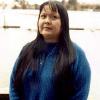
Louise Brady was interviewed on December 22, 1998 by Kristen Griffin at the Sitka Tribe of Alaska offices in Sitka, Alaska. Robi Craig, Tribal Anthropologist for the Sitka Tribe, also was present at the interview. Louise has strong ties to the site of Sitka National Historical Park, and in this interview she talks about the traditional Kiks.ádi memorial services for clan members lost during the 1804 Battle between her clan and Russian forces, the importance of the Park to herself and to her clan, and discusses the meaning of the Tlingit term "atoo."
Digital Asset Information
Project: Sitka National Historical Park
Date of Interview: Dec 22, 1998
Narrator(s): Louise Brady
Interviewer(s): Kristen Griffin
People Present: Robi Craig
Themes
After clicking play, click on a section to navigate the audio or video clip.
Sections
1) Introduction and personal background
2) Learning the cultural history of the Park and the battle site, and reviving the Tlingit battle memorial
3) Reviving the battle memorial, and her personal connections to the Park
4) The importance of knowing her own clan history and ties to the Park and passing this on to the next generations
5) What the story of the battle represents to Tlingit and why it's important
6) The meaning of the Tlingit term "atoo"
7) Atoo and its incorporation into everyday life in Tlingit culture, and differences between Western and Tlingit beliefs
8) Clan ownership of songs, and use of songs for different purposes
9) Changes in Tlingit cultural preservation efforts and attitudes
10) Clan term definitions and descriptions
11) Clan identity and the ties to people and land it provides
12) Comparing atoo with the Western world, and personal connections to place, people, and objects atoo provides
13) Differences between Tlingit and non-Native ways of experiencing the world, as expressed in weaving and cultural property
14) Her perspectives on the carving and raising of the Indian River History Totem Pole at the Park's Cultural Center
15) Why the Park is culturally important
16) How the Park symbolizes the strength of the Tlingit people and their long ties to the place
Click play, then use Sections or Transcript to navigate the interview.
After clicking play, click a section of the transcript to navigate the audio or video clip.
Transcript
Section 1: Kiks.ádi/ Sitka/ Baranof Island/ Point House/ Clan -- Raven/ Park -- use of/ Park -- playground/ Mt. Edgecumbe School/ Brady, Louise -- mother/ Olson, Charlie/ Fort Site/ battle|
Section 2: Olson, Charlie/ Park -- significance of/ battleground/ march -- survival/ Brady, Louise -- father/ Hope, Fred/ songs -- clans/ Southeast Alaska Clan Conference/ elders/ tour/ Jacobs, Mark/ Brady, Louise -- mother/ picnic/ fall/ memorial -- battle/ memorial -- revival/ songs -- memorial|
Section 3: Kiks.ádi/ memorial -- battle/ memorial -- importance of/ Brady, Louise -- mother/ memorial -- end of/ World War II/ Park -- use of/ culture -- learning/ Park -- artifacts/ Park -- connections to/ battle -- women's role|
Section 4: Kiks.ádi/ history/ children -- teaching/ pride/ Clan -- Raven/ Clan -- Eagle/ clan -- behavior/ Sitka/ Kaagwaantaan/ clans/ memorial -- future/ battle -- anniversary|
Section 5: battle/ place -- history/ survival march/ history -- Tlingit/ history -- Russian/ Brady, Louise -- mother/ Cottages|
Section 6: atoo -- definition of/ Chilkat Robes/ carved frontlets/ event -- commemoration/ clan house/ spirit/ Kiks.ádi|
Section 7: atoo -- definition of/ art -- importance of/ totem pole/ house front/ art -- meaning/ atoo -- ownership/ Point House/ Kiks.ádi/ society -- differences/ clan houses -- loss|
Section 8: songs/ atoo/ stories/ Kiks.ádi/ songs -- clan/ Kaagwaantaan/ songs -- uses of|
Section 9: collections -- cultural/ history -- Tlingit/ atoo/ cultural property -- changes/ Native American Graves Protection and Repatriation Act (NAGPRA)/ Sitka/ collaboration/ National Park Service/ communication/ relations -- changes in/ Tlingit identity -- changes/ traditions -- acceptance of|
Section 10: clan crest -- definition/ clans -- terms/ Clan -- Raven/ Clan -- Eagle/ Kiks.ádi/ Clan -- Frog/ clan -- identity/ clan crest -- design/ Sitka/ Kiks.ádi|
Section 11: Deisheetaan/ Clan -- Beaver/ Angoon/ ties -- land/ ties -- people/ Baranof/ atoo/ spirit/ place -- sense of/ clan crest -- origin/ Kiks.ádi|
Section 12: atoo -- Western equivalent/ atoo -- meaning of/ basket -- South Baranof Island/ anthropologists/ cultural objects -- connection with|
Section 13: differences -- Native and Non-Native/ property rights -- intellectual and cultural/ Raven's Tail Weaving/ weaving -- meaning of/ prayer/ culture -- trivializing|
Section 14: Park -- Cultural Center/ Indian River History Totem Pole/ tradition/ controversy/ totem pole -- carving/ totem pole -- raising/ lifestyle -- change/ culture -- change/ art -- context of/ Tlingit -- identity|
Section 15: Park -- cultural importance of/ Kiks.ádi -- history/ ancestors/ pride/ battle/ Russians/ history -- importance of/ oral history/ Park -- meaning of/ Tlingit -- strength of|
Section 16: Park -- meaning of/ Tlingit -- strength of/ Park -- strength of ties|

